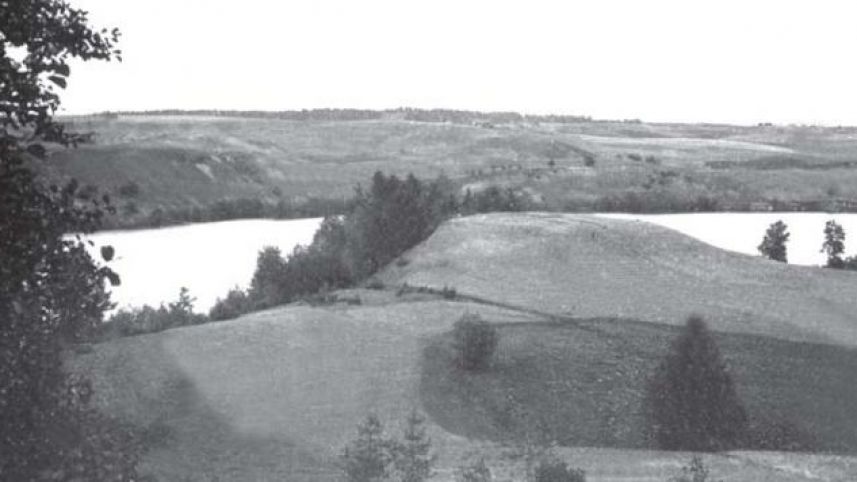
Velikuškiai Hillfort I, which commemorates both the legacy left by the Brushed Pottery culture and the memory of the Selonians, was excavated in 1933 by Petras Tarasenka and Professor E Volteris. They investigated almost the entire 45 x 25m oval site and part of the 22m-high southern and eastern slopes. The investigations uncovered a cultural layer which went down to a depth of between 20-30cm (in some places it was 50cm). The earliest finds include a butt of a stone boat-shaped axe and a stone Baltic-type hafted axe which date back to the Brass Age. Other finds from the Early Iron Age period include pottery fragments and pieces of pots, along with bone daggers, the remains of stone hearths, and many bones of animals, birds, and wild beasts. The most interesting find was of a double tomb of a man and a woman in a 1.2m-diameter clay-covered bowl-shaped pit which was found near the site’s centre. In addition, the burnt bones of thirty-six people were found at the edges of the hillfort, along with burial markers which were dated to the period between the seventh and twelfth centuries AD. Velikuškiai Hillfort II is an artefact which is linked to Lithuanian prehistory, and one which reflects the worldview of the Selonians. In 1933, archaeological excavations which were carried out by Petras Tarasenka established the fact that Velikuškiai Hillfort II dates back to the first millennium BC. The site is characterised by the predominance of Brushed Pottery culture remains. This hillfort, on a 140 x 80m site and with slopes which range between 20-25m in height, ‘sheltered’ and ‘protected’ Selonian heritage for centuries.







.png)


_2.png)

.jpg)